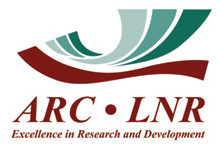
ARC-Grain Crops, Potchefstroom
 Dr Belinda Janse van Rensburg,
Dr Belinda Janse van Rensburg, ARC-Grain Crops, Potchefstroom
 Dr Bradley Flett,
Dr Bradley Flett, ARC-Grain Crops, Potchefstroom
Seed-borne pathogens can infect seeds during seed production, be transmitted from seed to seedling and can infect the full-grown plant. Seeds are a highly effective way of transporting certain plant pathogens over long distances.
The following can be expected when producers plant infected seeds: reduced germination, increased seedling mortality, stunted growth and plant diseases – all culminating in reduced yields. Most seed-borne pathogens are also soil-borne, so planting infected seeds can introduce new soil-borne pathogens in uninfected soils. It is therefore imperative for producers to plant and/or seed companies to supply healthy seeds. Although two of the bacterial diseases of maize that will be discussed here have not yet been reported in South Africa, it is important to know of them as they could be imported into the country. This also highlights the importance of using certified disease-free seed.
Main seed-borne bacterial diseases of maize
Stewart’s bacterial wilt
Pantoea stewartii subsp. stewartii (Erwinia stewartii) is the bacterium that causes Stewart’s wilt in maize. The disease is widespread in the USA, but yet to be reported in South Africa. The bacterium is seed-borne, although the seed to seedling transmission rate is low. The bacterium overwinters in seed, soil or maize stalks and is vectored by the maize flea beetle, Chaetocnema pulicaria. Two phases of the disease exist and are linked to the insect vector. For the first phase, symptoms of the disease are observed soon after the emergence of the maize plant and external symptoms include bleached leaf streaks that may run the length of the leaf (Photo 1).

Photo: Dr Jim Stack, Kansas State University, USA
Internal symptoms are discolouration of vascular tissues, oozing of the bacteria from the cut surface of a stem cross-section and discolouration and decay of the crown. When the disease is severe, seedlings will wilt and die. The second phase of Stewart’s wilt is a leaf blight that occurs after tasselling. Although plants are usually not killed by this phase, significant leaf area can be damaged, predisposing the plants to stalk rot. Weather conditions that would favour the survival of the maize flea beetle will favour the survival of the Stewart’s wilt bacterium. High temperatures of greater than 35°C will favour the multiplication of the population of the flea beetle and thus the risk of Stewart’s wilt will also be high.
Goss’s bacterial wilt and blight
The disease is caused by Clavibacter michiganensis subsp. Nebraskensis, a gram-positive bacterium that is seed-borne and also common in the USA, but not in South Africa. Although the seed transmission rate appears to be slow, the bacterium can overwinter in maize crop residues that become the most important source of the inoculum. The disease can be distinguished from other diseases firstly by the development of dark green to black discontinuous water-soaked spots (freckles) (Photo 2) near the edges of expanding lesions. The second identifiable characteristic is the creation of an exudate or ‘ooze’, which when dried may glisten and appear shiny on the leave surface (Photo 3). The bacteria can infect the vascular system (Photo 4), causing a systemic wilt phase characterised by discolouration of the water-conducting elements and ultimately a slimy stalk rot that results in wilting and plant death.



Photos: Tamra Jackson, Institute of Agriculture and Natural Resources, University of Nebraska–Lincoln
Bacterial stalk and top rot; stem rot
Erwinia chrysanthemi pv. zeae (Dickeya zeae) is the causative agent of bacterial stalk and top rot of maize. The disease is widespread in South Africa, particularly under irrigation in hot, dry environments. The bacterium is carried on seed, however, there is no evidence of seedling transmission. The bacterium can survive on maize debris and is spread by water; it can therefore be a serious problem in particularly hot areas with heavy rainfall and/or overhead irrigation. The disease is severe under conditions of high temperature and humidity.
Symptoms are mostly found in mid-season when maize plants suddenly wilt and lodge or the whorl and growth point die and wilt. The most distinctive symptom of Erwinia infection is the foul smell of diseased, slimy plant parts. Initial disease symptoms include premature withering and drying up of the tips of the uppermost leaves, soon followed by the lower leaves. The rot may extend from the base upwards (basal rot) or from the top downwards (top rot). The stalk typically twists and falls over (Photo 5). However, the plant may remain green for several weeks since the vascular tissue is not destroyed.

How to control seed-borne diseases
Use of uninfected seeds
The use of uninfected seeds is considered the most appropriate way of controlling bacterial diseases of maize. Infested seeds can be responsible for the re-emergence of plant diseases, movement of pathogens across international borders and/or introduction of diseases in new areas. Seed-borne bacterial diseases continue to be a serious problem worldwide. They may cause significant economic losses since – unlike for seed-borne fungi – strategies for management of bacterial diseases are inadequate.
Quarantine
This process involves the prevention of the movement of pathogenic bacteria from infested to non-infested areas by restricting the transfer of seeds, plants and plant products. In this case, both international and domestic transfer are controlled by plant quarantine regulations. It is imperative to detect, isolate and identify these bacterial pathogens by following specific detection techniques in order to avoid the introduction of these pathogens into new areas.
Cultural and farming practices
The inoculum source must be destroyed for successful disease control. Seeds should be produced in disease-free areas or areas where pathogens of major concern are unable to establish or maintain themselves during periods of seed development. Also, inspection of seed production plots or crops raised for seed production is an important step in producing clean and healthy seeds. Diseased plants at the time of inspection should be destroyed in order to reduce inoculum in the field. In cases where the disease incidence is very high, the entire crop should be rejected for seed.
Importance of planting pathogen-free seeds
Seed is a crucial input for agricultural production. Nonetheless some producers (particularly small scale and/or subsistence) choose to produce their own seeds with the intention of saving costs on the annual purchase of seeds. Most smallholder producers depend on this informal seed system, consisting of producers involved in selection, production and dissemination of seeds. The problem with this system is that there is no seed health testing and therefore the seed quality is not always good. Seed-producing producers multiply their seeds on the farm without frequent seed renewal (a process known as seed recycling) and this may lead to low seed quality.
Planting of infected seeds will lead to reduced germination, increased seedling mortality, stunted growth and plant diseases, all resulting in reduced yields and consequently less profit. To resolve this, uninfected seeds are recommended to maize producers. These seeds have improved traits such as better yield, pest resistance, drought tolerance, herbicide tolerance and they are pathogen-free. Maize producers are strongly advised to buy seeds from reputable companies or producers that are involved in breeding, varietal registration, seed multiplication, quality control and seed dissemination.
Producers are welcome to contact Dr Henry Njom with any bacterial disease enquiries at 018 299 6225.



























